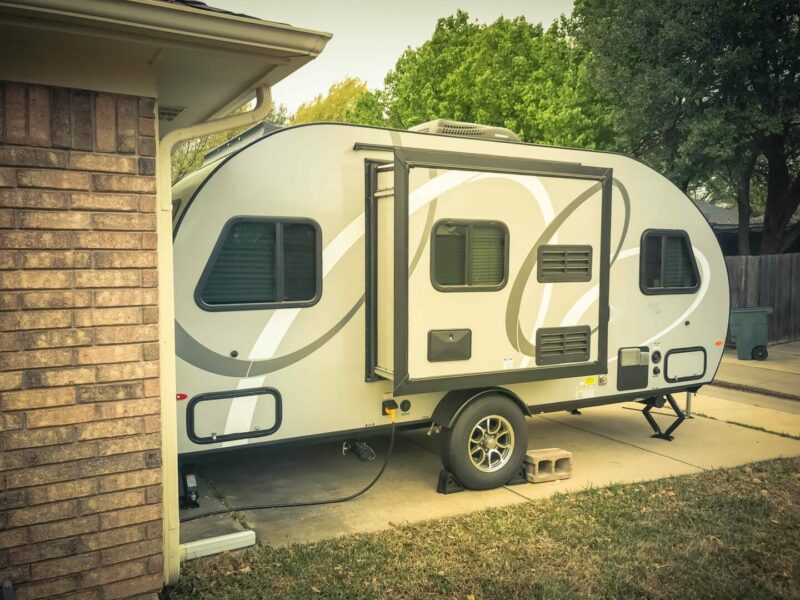Table of Contents Show
Preparing for an RV adventure should start days in advance. However, to fully prepare your rig for your trip, you’ll want to connect it to a power source. Keeping your RV plugged in also has several other benefits. Keep reading if you’re looking to keep your RV plugged in at home and want to know how to do it.
Can You Plug in Your RV at Home?
Plugging your RV in at home can be relatively simple if you have an accessible electrical connection. You’ll likely need a heavy-duty extension cord to avoid any components overheating. A standard 15-amp electrical socket is enough for the bare necessities; however, you’ll want to upgrade the wiring and connection if you need more power.
Depending on how often you’ll need to plug in your RV at home, you may consider installing a 30- or 50-amp electrical connection. This can give you full functionality of your RV at home, which can be helpful when preparing for a trip or when guests come into town.
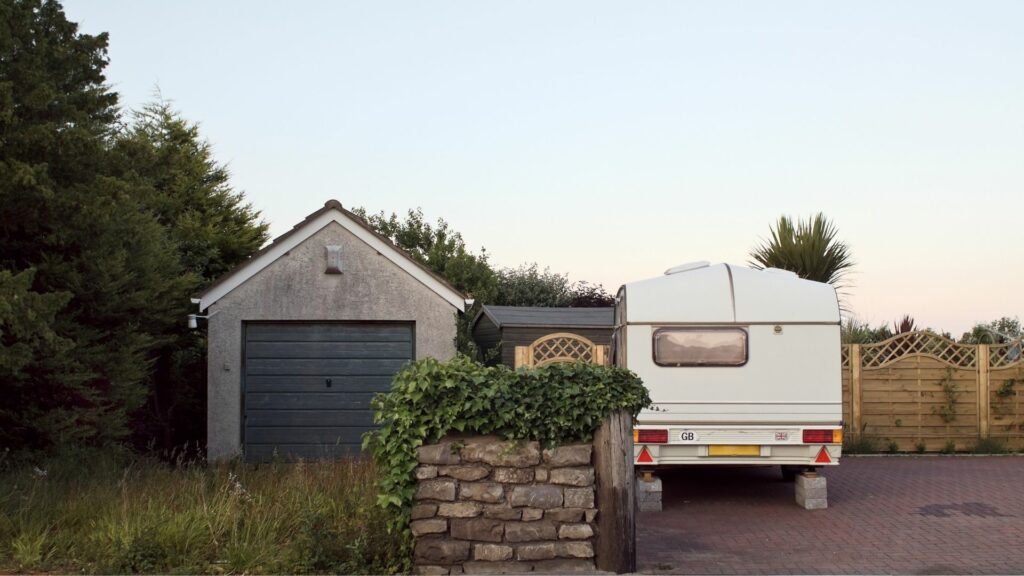
What Types of RVs Can You Plug into a House?
Virtually every RV can plug into an electrical connection at a house. You may need to purchase attachments or monitor your electrical usage, but it’s relatively easy to do. You’ll likely use your RV’s standard power cord with an attachment and possibly even an extension cord for it to work.
If you notice that you’re tripping the breaker for the connection, try turning your refrigerator and water heater to propane instead of electrical. You should also limit air conditioning usage when connecting to anything less than a 30-amp electrical connection.
What Are the Benefits of Plugging in Your RV at Home?
Being able to plug in your RV at home can be tremendously beneficial. Doing so can allow you to keep your RV refrigerator cool, which means you can keep condiments and other essentials refrigerated. You’ll no longer have to worry if you grab the ketchup and mustard for the hotdogs. They’ll stay nice and cool in your RV refrigerator, even when you’re not using it.
Keeping your RV plugged in can also provide you with additional living space while at home. This can be a huge benefit when guests come into town or if your kids want to have a sleepover. You can use your RV to make memories, even when you’re not in a campground.
When you connect your RV to a power source, it will typically also charge the batteries. This means you won’t have to worry anymore about the charge of your battery bank before hitting the road. You’ll hitch up each time with a fully charged battery.
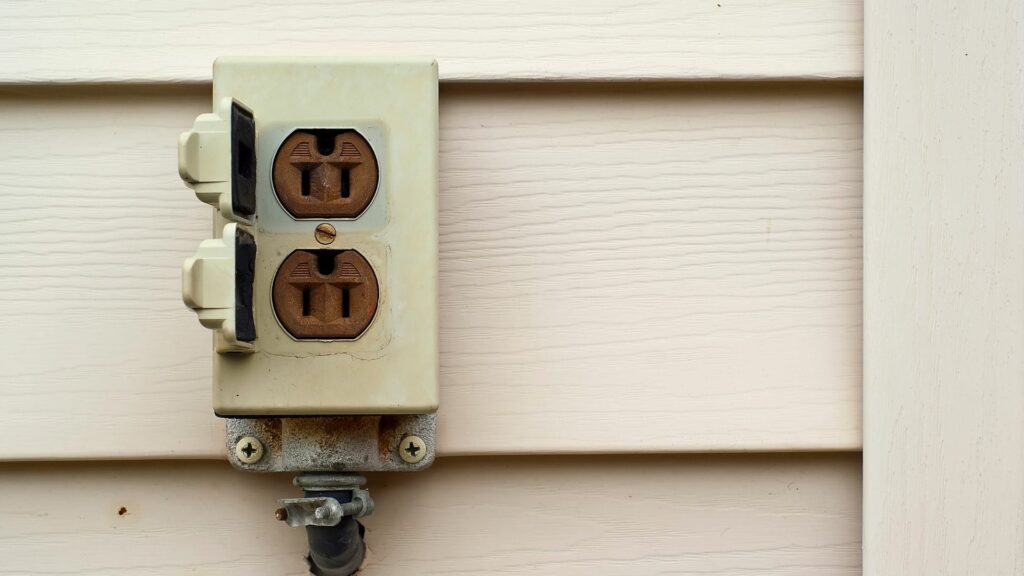
What Are the Disadvantages?
The benefits most definitely outweigh the disadvantages when it comes to plugging your RV in at your home. However, one major drawback is that it will increase your electric bill. If you’re just plugging your RV in to keep your RV’s refrigerator cool and your battery charged, it’ll likely result in a minimal increase.
However, if you’re planning to run multiple ACs or the electric fireplace, you could receive a pretty hefty bill from the electric company. So keep this in mind if you’re plugging in at home and you’re on a budget.
What Supplies Do You Need?
To plug your RV in at home, you’ll need a few supplies. These are supplies we recommend virtually every RVer has on hand. This can save you from a frantic trip when you realize you’re missing something.
Dogbone Adapter
You’ll need a dogbone adapter if you’re connecting to a power source where the amperage is different from your RV. If you have a 50-amp RV, you can use a dogbone adapter to connect to a 30-amp electric connection or even a 15-amp connection.
If your RV is 50-amp, you’ll likely want to invest in a 50-amp to 30-amp dogbone anyway. There’s a good chance that you’ll eventually find yourself at a campsite or location that only offers a 30-amp connection. Having a few dogbone adapter options is always beneficial and helps ensure you can connect your RV to power, whether you’re at home or a campsite.
Heavy-Duty RV Outdoor Extension Cord
There may not be a power source in a convenient location to plug in your RV at home. A heavy-duty RV outdoor extension cord can provide you with the extra length necessary to connect your RV.
The sizes of your extension cord and electrical connection will determine what you can power in your RV. Exceeding the ratings of your extension cord or the electrical connection can damage cables and connections. This can also create a dangerous situation for not only your RV but your home as well.
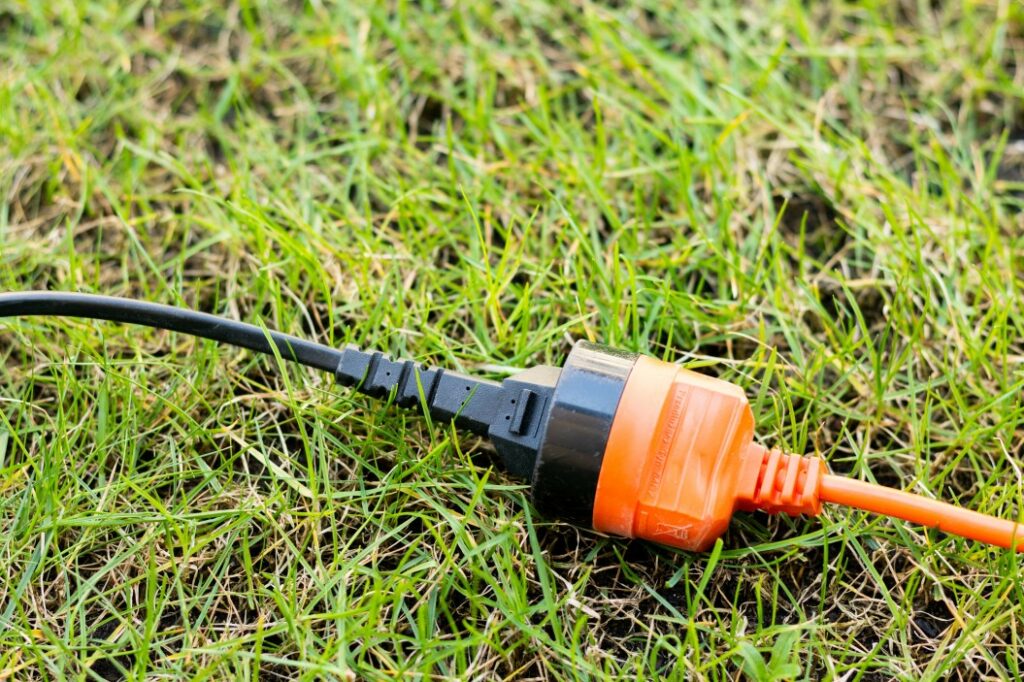
Surge Protector
Anytime you’re connecting your RV to a power source, you should be using a surge protector. An RV surge protector works similarly to what you would use on TVs and other expensive electronics in your home, but it protects your RV and its sensitive electronics. These devices keep your RV safe from lightning and other intense surges of power. Some of the more expensive devices also protect against voltage drops, which can be equally as damaging to the electronics in your RV.
Pro Tip: Get reliable power with these shockingly dependable RV electrical accessories.
How to Plug Your RV in at Home
The process for plugging your RV in at home will vary depending on the type of electrical connection available. If you have a 50-amp RV and a 50-amp electrical connection, the process is similar to how you’d connect at a campground. You should connect the power cable to your RV, connect the surge protector to your power cable, and then plug it into the electric outlet.
If you’re plugging into an outlet that’s different from your RV’s amperage, you’ll need to use an adapter or two. The process of connecting your RV power cable and a surge protector is still the same. However, you’ll need to have the appropriate attachments to connect to the power source.
You must turn off the breaker to the connection when plugging in your RV. You should also plug in your surge protector to ensure the connection is safe and free from faults or errors.
Which RV Appliances Can I Run While Plugged in at Home?
The appliances you can run in your RV while plugged in at home will depend on the size of the power connection. A standard 15-amp power connection will mostly allow you to keep your battery charged, use lights, charge small electronics, and watch some TV.
Using an air conditioner, making coffee, or using any other high-powered appliances typically requires at least 30- or 50-amp electrical service. It’s important to manage your power usage to avoid tripping a breaker or overloading wiring and circuits.
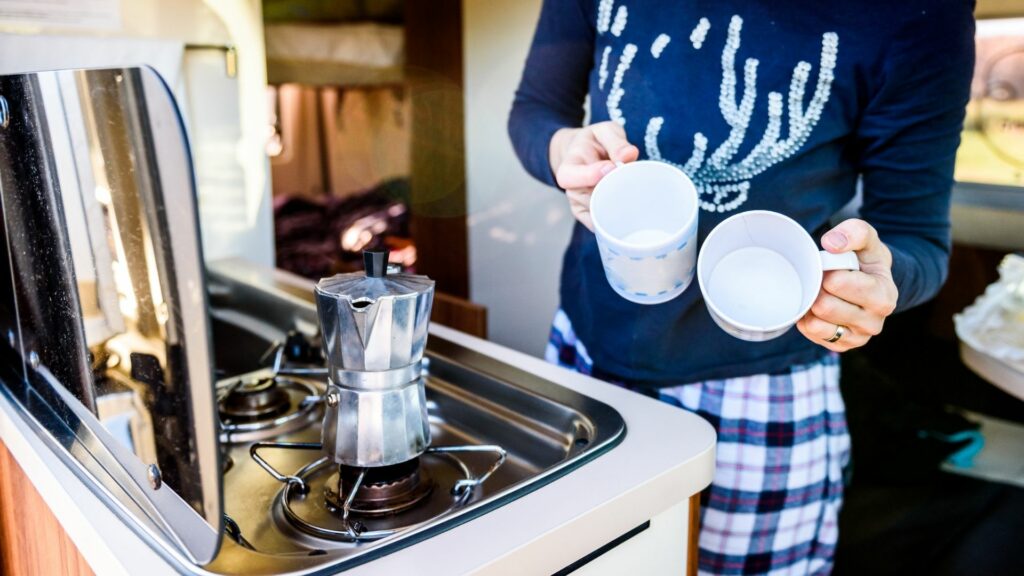
Plugging in your RV at home can be extremely convenient. It may allow you to use your RV while it sits beside your home. You can hitch right up and not worry about your fridge getting warm or the status of your battery. Do you have a place to plug in your RV at home?




